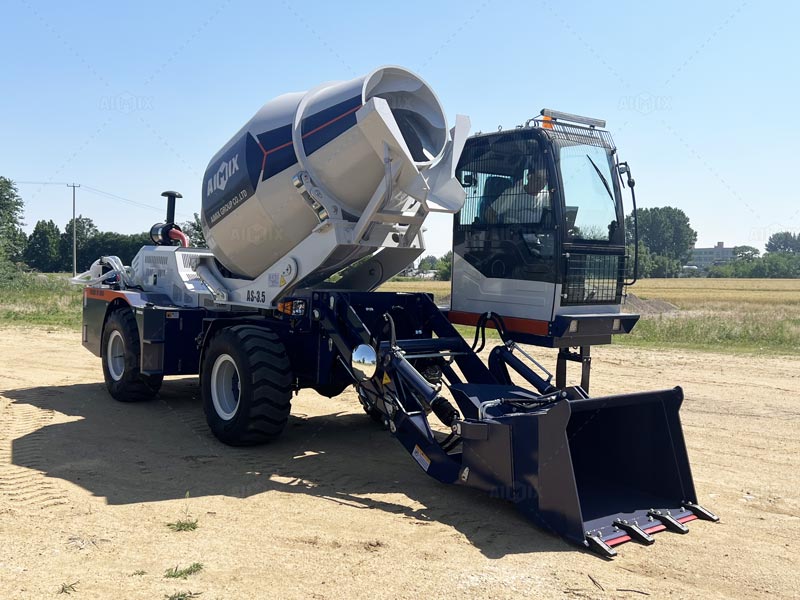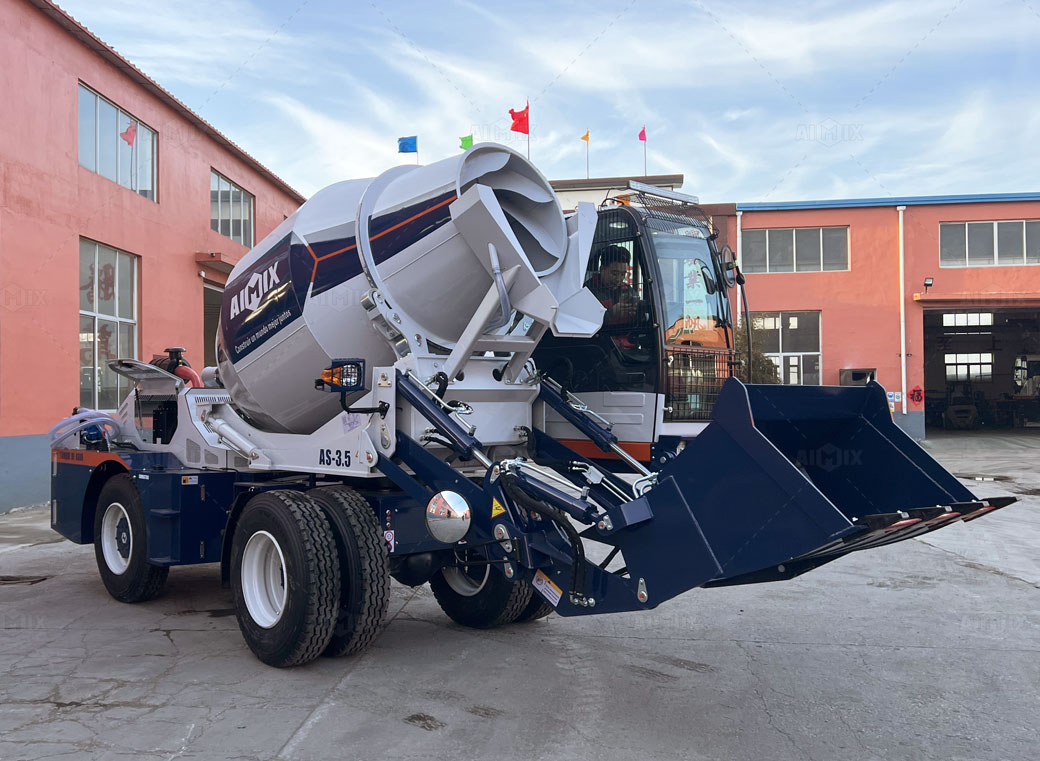A self-loading concrete mixer is a versatile and essential piece of equipment in modern construction projects. Regular maintenance and inspections are crucial to ensure its optimal performance and longevity. In this guide, we will explore how to check the mechanical parts of a self-loading mixer, covering essential components and best practices for maintaining this vital machinery.
Why Regular Maintenance is Important
Ensuring Operational Efficiency
A well-maintained self-loading concrete mixer(autohormigonera) operates efficiently, minimizing downtime and reducing the risk of costly repairs. Regular checks ensure that the machine performs at its best, delivering consistent concrete mixes for your projects.
Extending Equipment Lifespan
Routine inspections and timely repairs prevent minor issues from escalating into major problems, thereby extending the lifespan of your self-loading mixer. This protects your investment and enhances its resale value.
Enhancing Safety
Proper maintenance reduces the risk of accidents caused by mechanical failures, ensuring a safer working environment for operators and other construction workers.

Key Mechanical Parts to Inspect
1. Engine
The engine is the heart of the self-loading concrete mixer(autohormigonera chile). Regularly check for oil levels, leaks, and unusual noises. Inspect the air filter and clean or replace it as needed to ensure efficient operation.
2. Hydraulic System
The hydraulic system powers essential functions such as drum rotation and loader operation. Inspect the hydraulic hoses for leaks or damage, and ensure the hydraulic fluid is at the recommended level.
3. Transmission
The transmission system is responsible for transferring power from the engine to the wheels and drum. Check for smooth gear shifts and inspect the transmission fluid for proper levels and quality.
4. Mixer Drum
The mixer drum is a critical component for mixing and transporting concrete. Inspect the drum for wear, cracks, or rust, and ensure that the blades inside the drum are intact and functional.
5. Tires and Axles
Check the tires for proper inflation, tread wear, and any signs of damage. Inspect the axles and suspension system to ensure they can handle the load without issues.
6. Loader Arm and Bucket
The loader arm and bucket are essential for loading raw materials into the mixer. Inspect these components for cracks, bends, or excessive wear, and ensure that the bucket operates smoothly.
7. Braking System
A reliable braking system is crucial for the safety of the self loading mixer. Inspect the brake pads, discs, and hydraulic brake lines for wear and leaks. Test the brakes regularly to ensure they are responsive.

Steps to Conduct a Thorough Inspection
Step 1: Perform a Visual Check
Start by visually inspecting the entire mixer for any obvious signs of wear, damage, or leaks. Pay attention to the engine, drum, tires, and hydraulic system.
Step 2: Check Fluid Levels
Inspect all fluid levels, including engine oil, hydraulic fluid, transmission fluid, and coolant. Refill or replace fluids as necessary to maintain optimal performance.
Step 3: Test the Controls
Operate the controls to ensure they respond smoothly and accurately. Test the steering, braking, and drum rotation mechanisms for any irregularities.
Step 4: Listen for Unusual Noises
Start the engine and listen for any unusual noises, such as knocking, hissing, or grinding. These could indicate underlying mechanical issues that need immediate attention.
Step 5: Inspect Moving Parts
Check all moving parts, including belts, pulleys, and bearings, for signs of wear or misalignment. Lubricate these parts regularly to reduce friction and prevent premature wear.
Best Practices for Maintenance
Follow the Manufacturer’s Guidelines
Always adhere to the maintenance schedule and guidelines provided by the manufacturer of your self-loading concrete mixer(autohormigonera perú). This ensures that the equipment is maintained according to industry standards.
Use Quality Spare Parts
When replacing components, use high-quality spare parts that are compatible with your mixer. This prevents performance issues and extends the lifespan of the equipment.
Train Operators Properly
Ensure that operators are trained to use the self loading mixer correctly and are aware of basic maintenance tasks. This reduces the risk of operator errors and enhances the equipment’s reliability.
Keep a Maintenance Log
Maintain a detailed log of all inspections, repairs, and replacements. This helps track the mixer’s condition and ensures timely maintenance.
Common Issues to Watch For
Hydraulic Leaks
Hydraulic leaks can lead to reduced performance and potential damage to the system. Regularly inspect hoses and seals for leaks and address them promptly.
Engine Overheating
Overheating can occur due to low coolant levels, a malfunctioning radiator, or a clogged air filter. Monitor the engine temperature and address any overheating issues immediately.
Drum Malfunction
Issues with the drum, such as uneven rotation or damaged blades, can compromise the quality of the concrete mix. Regularly inspect and maintain the drum to avoid these problems.
Ger more information: https://aimixgrupo.com/
Conclusion
Regularly checking the mechanical parts of a self-loading concrete mixer is essential for ensuring its efficiency, safety, and longevity. By following the steps outlined in this guide and adhering to best practices, you can keep your self loading mixer in top condition, reducing downtime and maximizing productivity on your construction projects.